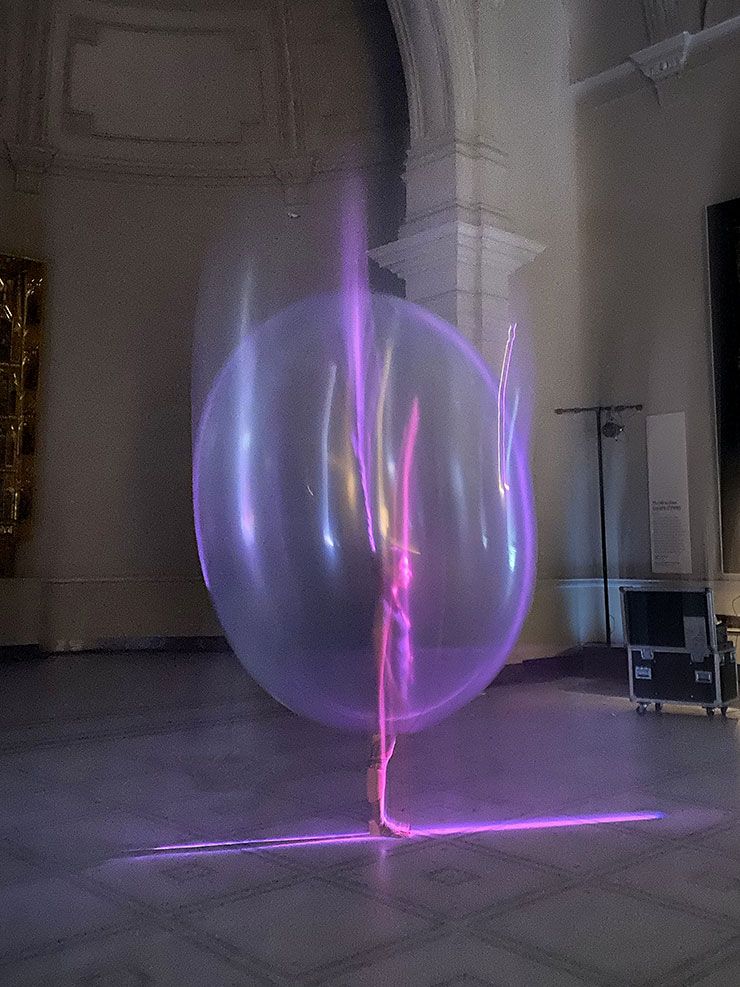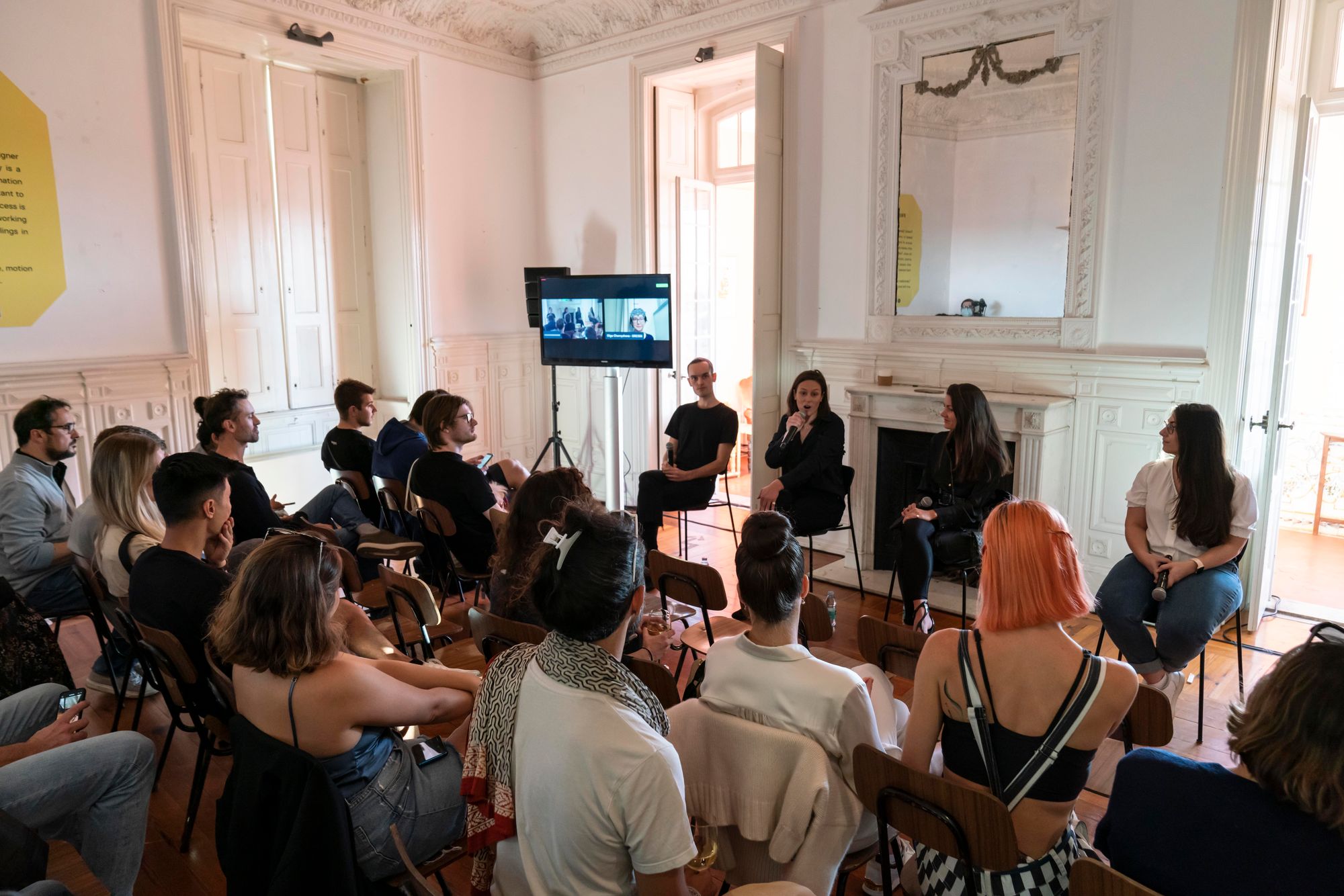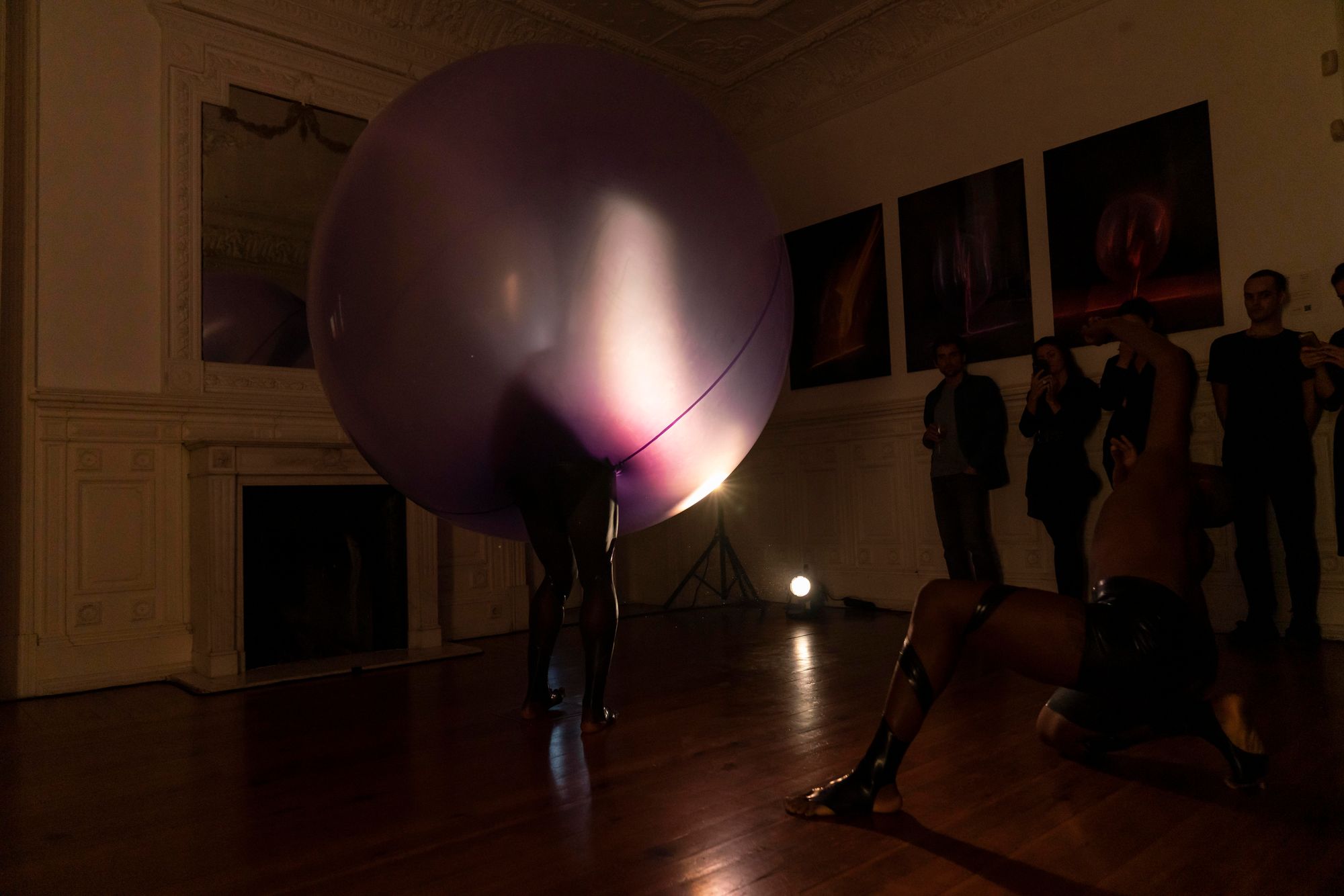by Julia Flamingo
Artpool is officially out there!
It was with great excitement that we held a hybrid event to celebrate Art Curator Grid’s new platform, Artpool – the digital fundraising solution for the art world, on October 24th. We welcomed artists, art professionals, developers, NFT people, and art and tech enthusiasts at Na Esquina, a 18th-century palace in Lisbon to dive into the possibilities new blockchain technologies offer us. The roundtable discussion “Sustainable Practices in Art and Fashion: What does the future look like in the Open Metaverse?” was followed by the performance of Norwegian artist and designer Fredrik Tjærandsen, who was invited by us to mint his first-ever NFTs. A collection of three photographs sold out in 24 hours!



Sustainability in the digital world has a lot of meanings. For Artpool, it means to enable tools for artists and creators to be paid for their work and sustain their practice. For Unique Network, the energy-efficient blockchain built for Polkadot and Kusama which powers Artpool and was co-hosting this event with us, sustainability is mostly related to energy efficiency and technology optimization to support eco-friendly NFT minting. In the case of DRESSX, the biggest platform of digital fashion which also participated in the event, digital garments are produced and supported in order to help the fashion industry- one of the biggest polluters in the world. For Outlier Ventures, invited by us to take part in the discussion as well, sustainability is also related to building “The Open Metaverse”, outlining the future of freedom and equitable economics with digital environments.
“Values in the Metaverse and Web3 are very similar to the ones I carry in the art world: the importance of the community, being closer to the process and creators. The more I am digging, the more I am fascinated”, said Pauline Foessel, founder and director of Artpool and Art Curator Grid at the start of the roundtable discussion. But let’s start from the beginning: what is Metaverse? And what about Web3?

Taking about the Metaverse
Metaverse basically refers to digital spaces where you can create and explore with other people who aren’t in the same physical space as you by the use of virtual reality or augmented reality. If today, people interact on social media, on the Metaverse, people’s interactions are multi-dimensional, and users are able to immerse themselves in digital content rather than only viewing it. Instead of seeing the Internet, you can enter it and perceive it as an environment.
It is simpler when you think about the gaming universe, where users produce avatars that can walk around and interact with other players. In these shared 3D virtual environments, everything can be bought and sold using cryptocurrencies. One can attend events, buy goods and services, travel the world, have dates with strangers, try out clothes online.
We are facing a phase of transition in which this universe is being built. Musicians can already perform shows in the “space”, like the performance pop star and singer Ariana Grande did last August. Fashion companies like DRESSX can make virtual clothing that people can wear in digital environments. Mark Zuckerberg just announced Facebook will transition from a social media company to a Metaverse company. Still, there is plenty of space for innovation as this whole universe will need lots of tools, content and places for people to engage with.
“By building the Open Metaverse we are trying to be more human-centric. The goal is to be open, to bring more value to humans. People are social, they need to express their creativity and make it sustainable. We are in the foundation of digital fashion and digital art”, explained Ana-Maria Yanakieva, Investment Manager at Outlier Ventures during the event.

Web3 explained
The Web we use today is known as Web 2.0: interactive experiences, user-generated content and marketplace economics are the main aspects of it. Facebook, Twitter and Uber are perfect exemples. As consumers, more and more voices have raised concerns on the loss of agency over our lives – everything we do is watched and centralized by these big companies.
So we are heading to a new era of the Internet, the Web 3.0, or Web3: the key words related to it are “Open” (built by an open community of developers), “Trustless” (participants can interact with all information verified), and “Permissionless” (no one can be barred from participation). Bitcoin, Ethereum, and other blockchain protocols are the driving forces of it.
If the Metaverse were to exist in a 2.0 setting, giant institutions and enterprises would still be gatekeepers. Everything would be centralized on them. If the Metaverse is settled on Web3, consumers take back the ownership of their own data.
“The Web3 is about creators, is about putting them in the center of the space. But then how do you decide on the value of your work? You actually need a network- of curators, of buyers, of marketers- you still need to build an ecosystem around your work. Because if you just mint something and put it on the web, it doesn’t mean it will be appreciated, sold, or discovered.”, said Irina Karagyaur Head of Metaverse Growth at Unique Network about their essential toolbox to facilitate the use of their blockchain solution during Artpool Launch.

Going beyond
All of speakers were unanimous on that point: the future of the Metaverse is mindblowing. What exists today is just the first steps of something huge that needs to be explored. “We’ve seen big auctions and galleries going to the space and making money. But they are not actually exploring the space. We need projects like Artpool to do it!”, said Olga Chernysheva, CSO at DRESSX, who participated in the talk online (and was using a digital crown during her presentation!).
“What we have seen this year, the boom of NFTs is fun. But we don’t want this space to be remembered for just collectibles. We want to go beyond. We have the possibility to create complex economic models, build NFT relationships. There is really a lot to uncover in the space”, added Irina Karagyaur.
There is no need to deal with blockchain complexities anymore, we are headed to better user experiences, easier ways to create your things on blockchain. Fredrik Tjærandsen's first-ever NFTs minted for the occasion of Artpool launch is an example of how new blockchain technologies are not only about tech but creativity and how artists can use the potentiality of the space in their work.
It’s about educating and opening doors. And this is what Artpool is here for.
Dive deep with us!